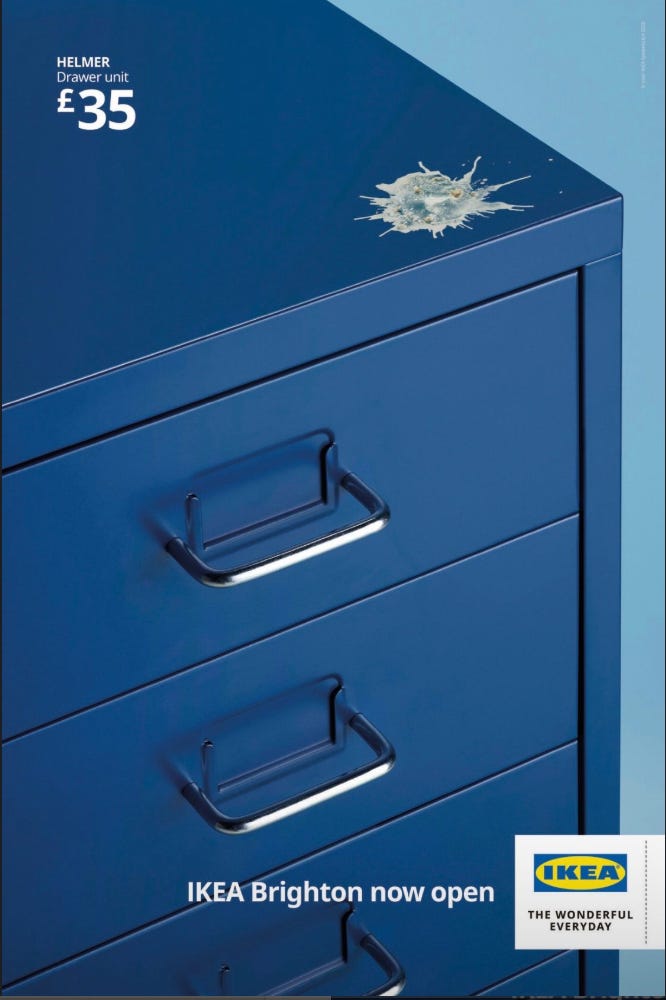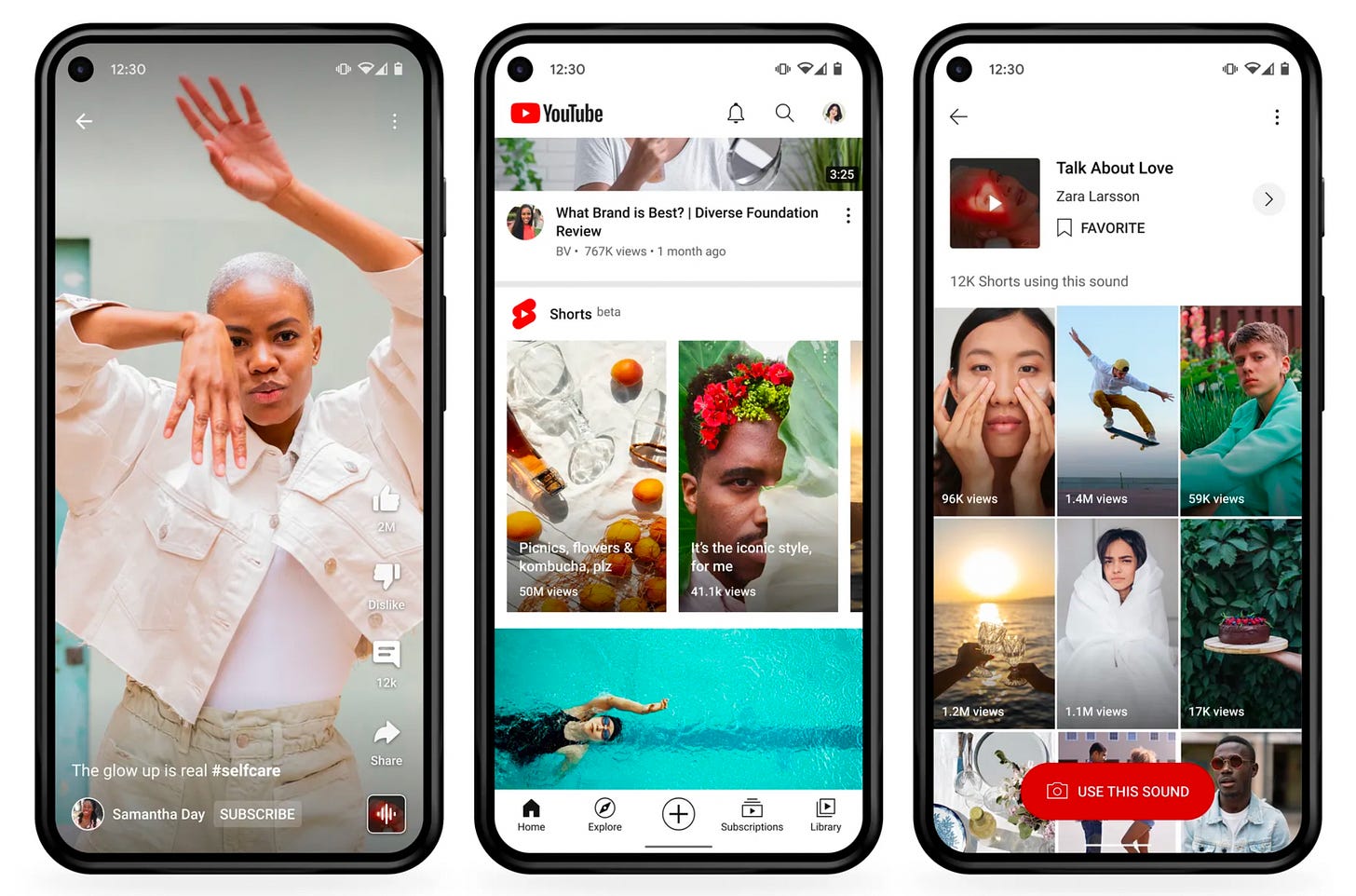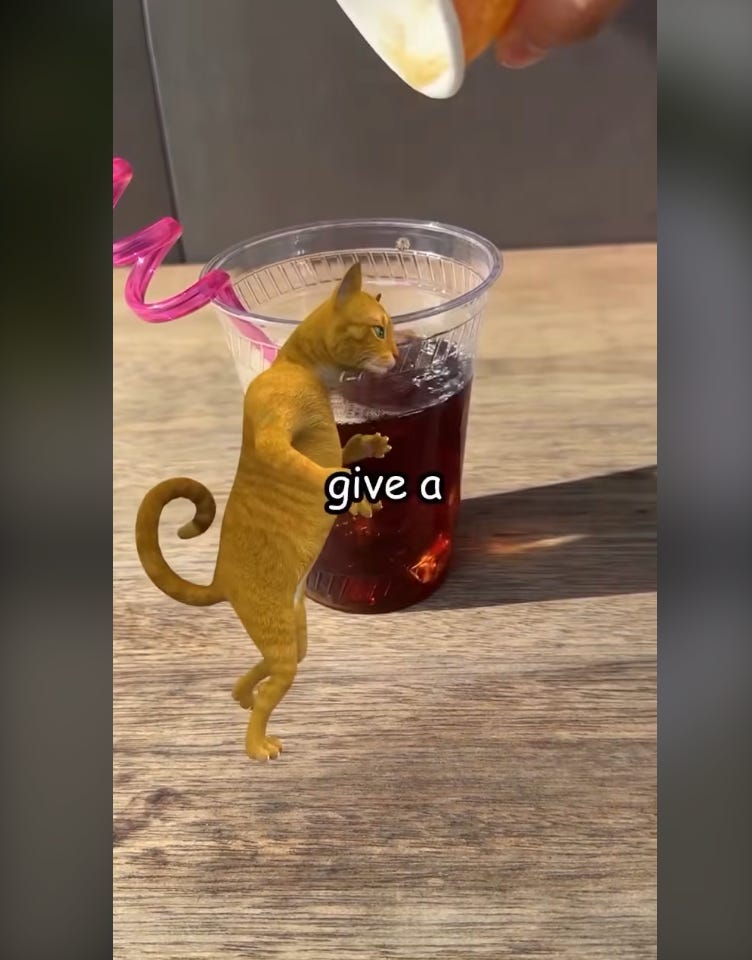SPN. 166: How to Convert & Build Brand with Short-Form Video
Plus, fund raising learnings from Brita Water and the best ad I've seen this week…
A very warm welcome to all the new subscribers. You’ve joined a community of over 3k marketing and fund raising operators at mission-driven Org’s. I’m thrilled to have you as readers and truly appreciate your feedback and support.
🔒 Security That Inspires Generosity
Donors don’t just give to programs - they give to Org’s they trust.
Fundraise Up is built to earn that trust. It’s engineered with enterprise-grade security, privacy-first infrastructure, and full compliance with the world’s most rigorous data protection standards, including SOC 2 Type II, ISO 27001, and PCI DSS Level 1.
✔️ No PII stored on your site
✔️ Automatic fraud prevention
✔️ Global compliance coverage
✔️ Real-time monitoring and incident responseFor your Finance team, your IT team, and your donors, Fundraise Up is the most secure choice for your digital fundraising.
👉 Talk to Fundraise Up.
Game-changer? You know it is!
In this week’s SPN:
Best ad I’ve seen recently
How to convert and build brand with short-form video
Why we can’t market our way out of poor donor experience
Learnings from Brita Water…
And, plenty of Jobs & Opps!
Ads
This was the best ad I saw this week by a country mile. It entertained me. See today’s longer post.
So simple. A load of Ikea furniture covered in seagull poop from the agency Mother (who happen to have an interesting website it transpires too). Whoever signed this off at IKEA is a legend.
“Ikea Brighton is now open.” 🐦
For non-UK residents, Brighton is a seaside town on the south coast of England. And there’s plenty of seagulls.
Weekly Reads 📚
Effective Short Form (System 1)
System1 and TikTok Unlock Keys to Short-Form Platform Ad Success (Lia)
“McKinsey in a Box”: The End of Strategic Consulting? (INSEAD Knowledge)
The Socioeconomic Impact of Digital Transition (BBC)
Physical Media Is Cool Again. Streaming Services Have Themselves to Blame (Rolling Stone)
The ‘Troublemaker’ Behind Netflix’s Biggest Gamble (Brandon Riegg pushed the streaming service to invest in live shows and sports)
Almost a third of Walmart's profit now comes from selling ads (Modern Retail)
Embracing Personalization: The Key to Building Stronger Customer Connections (Facebook)
From Silicon Valley to the Grand Prix - Why Apple wants F1 and what F1 gains (Idée Fixe)
How to Convert and Build Brand with Short-Form Video
“With large parts of today’s media landscape being skippable, ads that stop the scroll can deliver enormous effectiveness dividends. Creativity has never mattered more.”
That’s the headline from a whitepaper by System1 and TikTok. Their research tested nearly 900 ads across eight countries. The verdict was blunt and the solution isn’t more dashboards. They called for a return to what Fundraising Operators once prized before we got lost in performance metrics: entertainment. In other words, creative + craft = engagement.
I’ve dropped the whitepaper in the Weekly Reads section.
Why This Matters
Whether you’re UNICEF, Livestrong, or the Alameda Dog Sanctuary, your Org lives in an attention economy. Your paid and organic short-form video competes with every other video on TikTok, YouTube Shorts, and Instagram Reels - not just other Org’s.
If your content looks and feels like an ad, your donors will scroll past. If it feels like something they want to watch - you earn both their attention and their trust.
The study’s highest-performing ads had one thing in common:
They told stories with relatable characters and settings.
They had faces you remember, tunes you hum.
They made people feel something - and act.
Rediscovering What Works
The paper borrows its title from Peter Field’s classic The Long and the Short of It: the more you move away from rational messages to pure emotion, the more effective your advertising becomes. That insight is as relevant for donations as it is for sales.
Many moons before we started using the phrase “Dark Social”, it was Mark Schaefer in his really excellent book Marketing Rebellion (the most human company wins) who coined the phrase:
“Two thirds of your marketing is not your marketing.”
For Org’s, that means your most effective acquisition and retention drivers are often donor word-of-mouth and peer advocacy, not just our own brand campaigns. Iv’e sat in many a conversation where I’m running and optimizing thousands of ads for monthly giving, and yet the single most “persuasive ad” that surfaces during that research convo is actually a short, authentic video from a long-term donor explaining why they’ve given for 15 years - posted to their own network.
The “Product” Still Matters
In one of my weekend (print) newspaper reads I read some research on the auto industry and it mentioned how U.S. carmakers poured money into short-term sales incentives but still lost ground to Japanese brands like Toyota and Honda.
Why? The Japanese manufacturers invested in product quality and post-purchase experience, creating loyal customers whose positive word-of-mouth brought in the next wave of buyers.
The same is true for Org’s: we can’t market our way out of a poor donor experience. A frictionless donation checkout, clear follow-up, consistent comms, and meaningful recognition turn first-time donors into loyal advocates.
What the Research Shows About Short-Form
Good creative strengthens with repetition. They resist fatigue and deliver stronger brand lift.
Bad creative wears out fast. No amount of frequency can save it.
Entertainment isn’t optional. It builds memory, emotional connection, and both short-term conversions and long-term brand equity.
Creator-led ads win attention but can lose brand recall if branding isn’t embedded naturally from the first seconds.
For Org’s, that might mean pairing a trusted creator or frontline staff member with integrated brand cues - your logo on a volunteer’s vest, your signature campaign color, your branding - rather than bolting them on at the end.
Brita Water Example
Brita’s marketing team is nailing social. And they’ve a brilliant example of understanding a media channel.
I’m not pretending that this is a strategy all Org’s should follow. You can end up spending gazillions chasing something that might never catch on, distracting your team from something that will return results, for example, a solid paid ad strategy.
However, short-form video is skippable, so even paid ads need to behave like owned content to earn attention and not assume it.
→ That’s why it’s worth checking out BRITA Group’s US Reels or TikTok page. At first glance, we can all write it off as “brainrot” but there’s gold here for all Org’s to copy.
Yes, it’s entertaining with humor, story, etc. Yes, it’s daft, but so is the actual content on these platforms that people are choosing to watch. One thing separates Brita from the rest here, though.
The content manages to be entertaining without sacrificing the brand’s role. It’s still about hydration and water, not just goofy for goofy’s sake.
Second, again separating them from the pack, they’ve created a formula where their product is a character and can be shown in the first few seconds without empowering a skip. The research showed that editing logos onto content causes skipping, but brand shapes, characters, and logos in context don’t.
Third, audio. Sound has become so important in advertising now. Social is sound on, and visual attention is divided across all channels. But you can’t close your ears. Brita created a jingle in that ad. I can’t stop humming it. What does your brand sound like?
How to Action?
Lead with engagement, not explanation
Your next planned giving explainer video? Consider opening with a human story, humor, or surprise - then weave in the ask.
Embed your Org’s brand early, naturally
Logos in context (on T-shirts, signage in frame), consistent color palettes, and recognizable music help drive recall without feeling forced.
Use trusted messengers
Tap creators, beneficiaries, staff, or donors who already have credibility with your target audience. Their advocacy feels like word-of-mouth.
Match creative to brand maturity
If you’re brand isn’t as recognizable as others, every piece of creative should be building recognition. If you’re a category leader, and there’s plenty of you who read SPN, leverage your brand equity but don’t coast. Content can still close the gap with younger, faster-moving Org’s or distractions in general.
Choose emotion over indifference
Whether it’s joy, pride, or urgency, indifference is your enemy. If your short-form content doesn’t make someone feel something in the first three seconds, they will skip.
Bonus: Test for wear-in, not just click-through
Ask “does this creative get better with repetition? Or does it fatigue?” Apply learnings to your media mix.
The Bottom Line
Writing this has been a good note to self to stop treating content like a numbers game and remember what marketing is supposed to be: Memorable. Emotional. Enjoyable.
Or as the whitepaper puts it: “Ads that don’t entertain don’t just underperform. They disappear.” And with infinite AI-generated content looming, that’s the one thing none of us can afford.
On short-form video platforms, content is the ad. Ads are the experience. And in an era of infinite, AI-generated sameness, forgettable is fatal.
OK, that’s all for today.
I hope you’ve found one nugget today that you can put into play next week!
If you enjoyed this SPN, please consider sharing with your network. Thank you to those that do.
If a friend sent this to you, get the next edition of SPN by signing up below.
And huge thanks to this Quarter’s sponsor Fundraise Up for creating a new standard for donor experience that helps Org’s raise more money.
Now onto the fun stuff!
Jobs & Opps 🛠️
Free People: Director of Sustainability & Social Impact
Visa: Global Director, Gov Tech Partnerships, Visa Government Solutions
UN Environment Programme: Digital Transformation Consultant
UNICEF Canada: Director – Brand, Campaigns & Partnerships ($107,000 - $131,000)
U.S. Soccer Federation: Nonprofit Finance and Treasury Manager
English National Opera: Senior Philanthropy Officer (£50,000 - £55,000)
Make-a-Wish: Senior Manager, Corporate Partnerships ($98,000 - $115,000)
World Wildlife Fund (WWF US): Direct Response Marketing Manager ($99,800 - $143,500)
Plan International: Communications Manager ($75,000 - $80,000)
God’s Love We Deliver: Director of Philanthropy, Institutional Giving ($110,000-$130,000)





